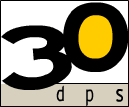Why Do Customers Click?
Long before there was a World Wide Web, I was clicking on hyperlinks to navigate HyperCard stacks. HyperCard was Apple Computers' breakthrough product, released in 1987, that was way ahead of its time. For those not familiar with HyperCard, probably the best way to describe it would be Web-meets-PowerPoint. Hypercard used the metaphor of a stack of 3"x5" cards, each of which could contain text and images (and eventually video and animation). One of its most creative technologies was the ability to jump from anywhere within the stack to anywhere else in the stack, simply by clicking on something called hyperlinks. Clicking was a new advent that came with a computer mouse... you see mice were new to desktop computers back then. Hyperlinks would most often be graphical representations of a button, or a clickable word (called hypertext, which usually was underlined).
Today, the world clicks on Web-based hyperlinks billions of times each day. Website developers create websites in such a manner as to allow visitors to click on these hyperlinks to navigate the content of the website. Unfortunately, we most often fail to thoughtfully consider WHY they click.
A click on a hyperlink (whether button, image, or hypertext link) actually constitutes someone looking for the answer to a question.
Historically speaking, website developers were most often computer programmers (that is, of course, changing). Computer programmers, being logical thinkers, and often trained in analysis and design, thoughtfully organized website content into hierarchies, or outlines, by thinking through what the website owner wanted to say or sell and grouping like things together. Those outlines became the navigational hyperlinks that allowed a visitor to make his/her way around the website.
Unfortunately, websites today are still too frequently organized that same way. The problem with employing that method of organizing content is that it fails to acknowledge that customers have specific questions in their minds that they are hoping the website will answer. So the best way to organize and present website content is to thoughtfully consider what those questions are (and the priority and sequence of those questions), then construct an architecture of answers. To know what questions visitors have, it's critically important to have a firm grasp on who these visitors are, what motivates them, what they view as success, barriers that might get in the way of achieving that success, and how they make decisions. The process of persona identification is the best process for accomplishing that understanding, and we'll cover that topic soon. In the meantime, remember: A click isn't just a click, it's a question looking for an answer!


